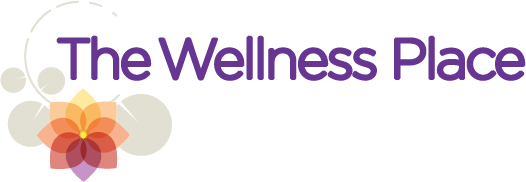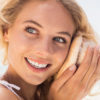The Ugly Truth About Cosmetics.
Think about it. When you’re at your optimal health, your skin is clear and firm, your eyes are bright, and your hair is thick and full of body. And there is nothing wrong with enhancing your appearance with cosmetics and personal care products. But what if these products are doing you more harm than good?
Like most people, I used to assume that if a product was for sale over the counter or through my dermatologist, it had somehow been evaluated and proven to be safe to use.
The harsh truth is that the Food and Drug Administration has no authority to require companies to test cosmetics products for safety. The agency does not review or approve the vast majority of products or ingredients before they go on the market.
With very few exceptions, cosmetics companies may use any ingredient or raw material in their products without government review or approval. And while the European Union has banned more than 1,000 potentially toxic ingredients from use in cosmetics, the FDA has only prohibited 11 of these.
Are “Natural” and “Organic” Healthier?
To add to the confusion, products labeled natural or organic often contain synthetic chemicals. Products labeled “organic” or “natural” can contain petrochemicals. Petrochemicals are suspected of causing organ system toxicity. Even products that are certified as “organic” can contain as little as 10 percent organic ingredients by weight or volume.
Not all products are safe: Cosmetics are poorly regulated and commonly made from untested chemicals – makers can use almost any ingredient they choose.
Why this Matters
Cosmetic ingredients get into the body in a number of ways: breathing in sprays and powders, swallowing chemicals on the lips or hands, or absorbing them through the skin. Substances can get absorbed through the skin into systemic circulation as quickly as 26 seconds! Think about it – things like nicotine patches for quitting smoking, nitroglycerine patches to prevent heart problems and even birth control patches take advantage of absorption of substances through topical application. So clearly, things we put on the skin can impact our entire body.
On average, American women use 12 personal care products a day, and men average 6 products. Overall, an adult is likely to be exposed to 126 unique chemical ingredients in personal care products alone every day.
126 ingredients each day
X 365 days
= 45, 990 unique chemical exposures from personal care products in a year.
Are You Sacrificing Health for Beauty?
The following ingredients are just some of the high-risk chemicals that are found in many of the products we use on our skin every day:
Parabens
Found in: Cosmetics, shampoos, conditioners, lotions, facial and body washes, scrubs and acne products.
What to look for on the label: Ethyl-, methyl- propyl-, butyl-, isopropyl-, isobutyl- and other ingredients ending in -paraben.
Health Concerns: The Centers for Disease Control (CDC) has detected parabens in virtually all Americans. According to the European Commission’s Scientific Committee on Consumer Products, certain parabens (propyl-, butyl-, isopropyl-, and isobutyl-), may disrupt the endocrine system and cause hormone imbalances (sex hormones, thyroid, adrenal, etc) and cause developmental delays.
Formaldehyde and Formaldehyde Releasers
Found in: Nail polish, nail glue, eyelash glue, hair gel, hair-smoothing, and straightening products, baby shampoo, body soap, body wash, and color cosmetics.
What to look for on the label: Formaldehyde, quaternium-15, DMDM hydantoin, imidazolidinyl urea, diazolidinyl urea, polyoxymethylene urea, sodium hydroxymethylglycinate, 2-bromo-2-nitropropane-1,3-diol (bromopol) and glyoxal.
Health Concerns: Formaldehyde is classified as a “known human carcinogen” by the International Agency on Research on Cancer. Formaldehyde can trigger asthma, neurological problems, and developmental problems.
Butylated hydroxyanisole (BHA)
Found in: Lipsticks, hair products, makeup, sunscreen, antiperspirant/deodorant, fragrance, and lotions. It is also found in food, and food packaging sold in the U.S.
What to look for on the label: BHA, BHT
Health Concerns: The National Toxicology Program classifies BHA as “reasonably anticipated to be a human carcinogen (cancer-causing).” BHA is suspected of causing disruption of the endocrine system, hormone imbalances (sex hormones, thyroid, adrenal, etc) and developmental delays.
PEGs
Found in: Shampoo, liquid soap, bubble bath, hair relaxers, anti-aging products and acne products
What to look for on the label: PPG, PEG, polysorbate and ingredients that end in -eth such as laureth, steareth, and ceteareth.
Health Concerns: PEGs are a family of conditioning and cleaning agents that go by many names. These synthetic chemicals are frequently contaminated with 1,4-dioxane, which the U.S. government considers a probable human carcinogen and which readily penetrates the skin. It has been strongly linked to breast cancer and other cancers.
Phthalates
Found in: “Fragrance”, nail polish, perfume, cologne, and body spray
What to look for on the label: phthalate, DEP, DBP, DEHP and fragrance
Health Concerns: A growing number of studies indicate that the chemical family of phthalates damages the male reproductive system. Pregnant women should avoid nail polish containing dibutyl phthalate. Everyone should avoid products with “fragrance,” which indicates a chemical mixture that may contain phthalates.
Fragrance
Found in: “Fragrance” as an ingredient is ubiquitous in personal care products, cosmetics, perfume, cologne, and body spray, as well as products for the home such as air fresheners and cleaning products.
What to look for on the label: Federal law doesn’t require companies to list on product labels any of the chemicals in their fragrance mixture. Look for products that disclose their fragrance ingredients.
Health Concerns: Fragrances can contain hormone disruptors, cancer-causing agents and can interfere with cell functions. Fragrances are among the top five allergens in the world.
Feeling Overwhelmed?
That’s understandable, but help is readily available from the Environmental Working Group (EWG). The purpose of the EWG is to “serve as a watchdog to see that Americans get straight facts, unfiltered and unspun, so they can make healthier choices and enjoy a cleaner environment.” Their website harbors a plethora of research on the harmful chemicals that we encounter every day through the products that we consume.
Find out if your products are safe
- Look up a product: Enter its name in the white search window.
- Look up an ingredient: If you want to know if a particular ingredient is safe, the database contains information about possible health concerns, which products contain it, other names — and a whole lot more.
- Search by company: Want to know how a certain company stacks up? Search its name to see how its products rate.
- Find safer alternatives: Pick a category (toothpaste? shampoo? mascara?) and peruse product ratings. Warning: goods in some categories, like hair relaxers, have uniformly high hazard scores.
There’s an App for That!
The EWG has created an app for your smartphone so you can simply scan the barcode of the product you are interested in and get the information you need to make a smart choice. Just search for “EWG” in your apps panel and choose “EWG’s health Living” for recommendations on personal and household products. (The EWG also has a great app for choosing the healthiest foods). If your product isn’t in the EWG’s database, you can do a search for the individual ingredients and get the safety ratings for them.
If you’d like to take a deeper dive, visit the EWG’s Skin Deep database https://www.ewg.org/skindeep/. The Campaign for Safe Cosmetics is also an excellent resource: http://www.safecosmetics.org.
The Bottom Line
I encourage you to research your cosmetics and personal care products. If we are reading our food labels to ensure that we are not putting toxins IN our bodies, shouldn’t we be reading personal care labels to see what we are putting ON our bodies?








